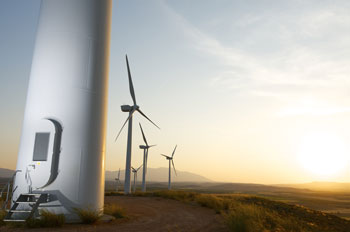Diversifying Revenue Streams For Oil And Gas
The Australian oil and gas sector faces a convergence of global trends and domestic challenges that require new ways of thinking about the exploration and production of these resources. A number of strategic opportunities exist for the industry if companies are willing to consider adapting their business models and diversifying into new revenue streams.

The oil and gas sector is currently preparing for a new energy era, challenging the sustainability and resilience of traditional business models. Rapid technological change makes the future energy mix difficult to predict and the industry faces a variety of market and regulatory uncertainties around oil and gas demand in the long term.
Increased pressure on the energy sector to decarbonise exacerbates these difficulties, with many oil and gas companies now exploring the value that renewable and clean energy technologies can create for the sector.
The report Oil and Gas | A Roadmap for unlocking future growth opportunities for Australia (Oil and Gas Roadmap) addresses some of the challenges and uncertainties facing the industry, to assist with ensuring the long-term viability of the sector.
The vision for Australian oil and gas outlined in the report is of a globally competitive, sustainable, collaborative and innovative sector that fully supports domestic energy needs and maintains a leadership position in energy export markets.
The Roadmap identifies four high-impact pathways to growth that are enabled by science and technology, one of which focuses on the need for the sector to proactively pursue new products and services and devise new business models that diversify revenue streams.
Industry interviews and desktop analysis conducted as part of the report highlight several examples of diversification, which include: integrated energy services; mini LNG and small floating LNG; and alternative energy products and intermediates.
Wade Elofson, Founder of Powered, an Australian energy and resource focused business development company, said that with the uncertainty currently surrounding the sector, it would be unwise for oil and gas companies to take a ‘business as usual’ approach.
“Diversifying into higher-value product and service offerings will allow oil and gas companies to gain competitive advantage and hedge against an uncertain future energy mix,” Mr Elofson said.
“To capitalise on these opportunities, the oil and gas industry must adopt bold thinking and foster an attitude of innovation and collaboration.”
Opportunities for distributed generation
In remote locations, electricity from the grid is often not an option, and oil and gas companies operating in remote locations usually burn valuable product, such as diesel, to operate their equipment.

The Roadmap suggests developing small local gas fields, which provide gas directly to nearby mine sites and communities and reduce the use of diesel, as an immediate solution to this problem. Diesel generators could be retrofitted to accept natural gas as fuel, or high efficiency gas turbine technology could be employed to supply the local microgrid.
Oil and gas companies can also integrate renewable energy into their operations. This may include solar and wind for onshore and offshore, or tidal and wave power for offshore, with rapid cost reductions and continuing efficiency improvements in solar and wind power making these options attractive alternatives to the burning of oil or gas or trucked-in diesel.
These renewable technologies can be integrated into production and operations to power on-site equipment, such as artificial lift and compression.
Gas powered hybrid systems can provide quick response base-load electricity to even out the intermittency of renewable energy.
Retrieving stranded gas assets
Following the LNG construction boom of the last decade, companies are now delaying investment decisions regarding new plants. Changing market conditions have left operators searching for new ways to deliver gas with the least amount of capital and operating expenses.
The Roadmap says that there will be a shift towards smaller developments that do not require such significant capital investments. The problem is finding ways to bring these (often stranded) assets to market, which could be overcome by using low-cost mini-LNG and small floating LNG (FLNG) technologies.
The advantages of mini, small and floating assets are their shorter development and deployment timelines, relatively low capital and operating costs, and ability to unlock small stranded resources.
Australia has an estimated 173tcf of stranded gas assets with total potential market value of $1.8 trillion. Many of these stranded assets are located offshore, in remote or deep locations where large scale LNG plants are not suitable due to the need to install pipelines over long distances, or where there are significant environmental issues related to locally situating plants.
Leading the way in future fuels
The Roadmap also explores how the current level of competition in the global natural gas market may provide an opportunity for oil and gas companies to explore alternative energy products and chemicals, such as converting Gas to Products (GTX), Gas to Liquids (GTL), or reforming methane to create hydrogen.
GTX/GTL can convert natural gas (or even gasified biomass or coal) into syngas, and through subsequent catalytic reactions can lead to fuels like diesel, gasoline, or jet fuel (so called Fischer-Tropsch fuels) and other chemical intermediates like methanol.
The GTX method can also yield Dimethyl Ether (DME)– a viable alternative to diesel in the trucking industry.
Hydrogen gas is a fuel with diverse applications and a very high energy density by mass. It is also clean-burning, emitting only water vapour, however, the key to fully capitalising on hydrogen fuel is finding low or zero-carbon methods of producing it.
For more information, contact Wade Elofson, founder of Powered, at welofson@poweredaus.com.au or on 04 7412 8517.


